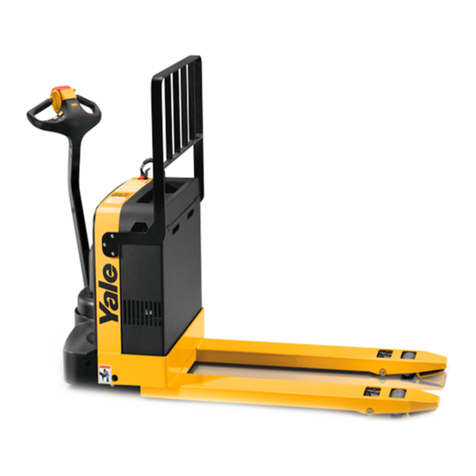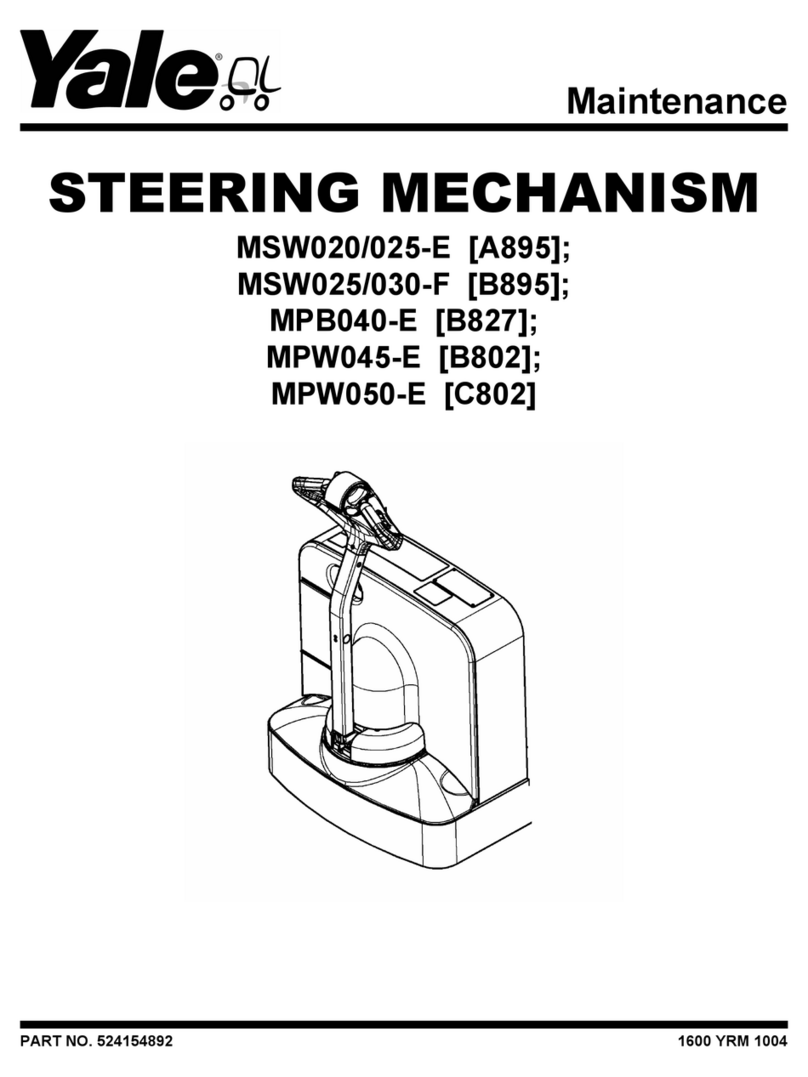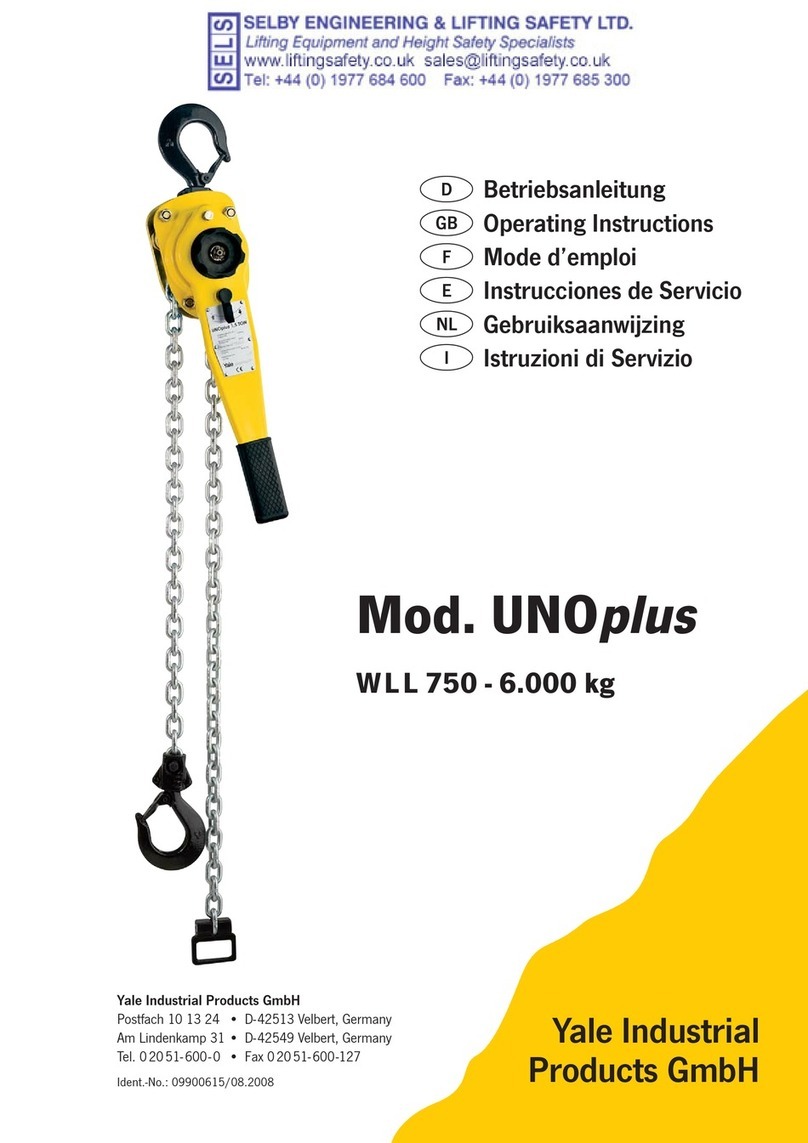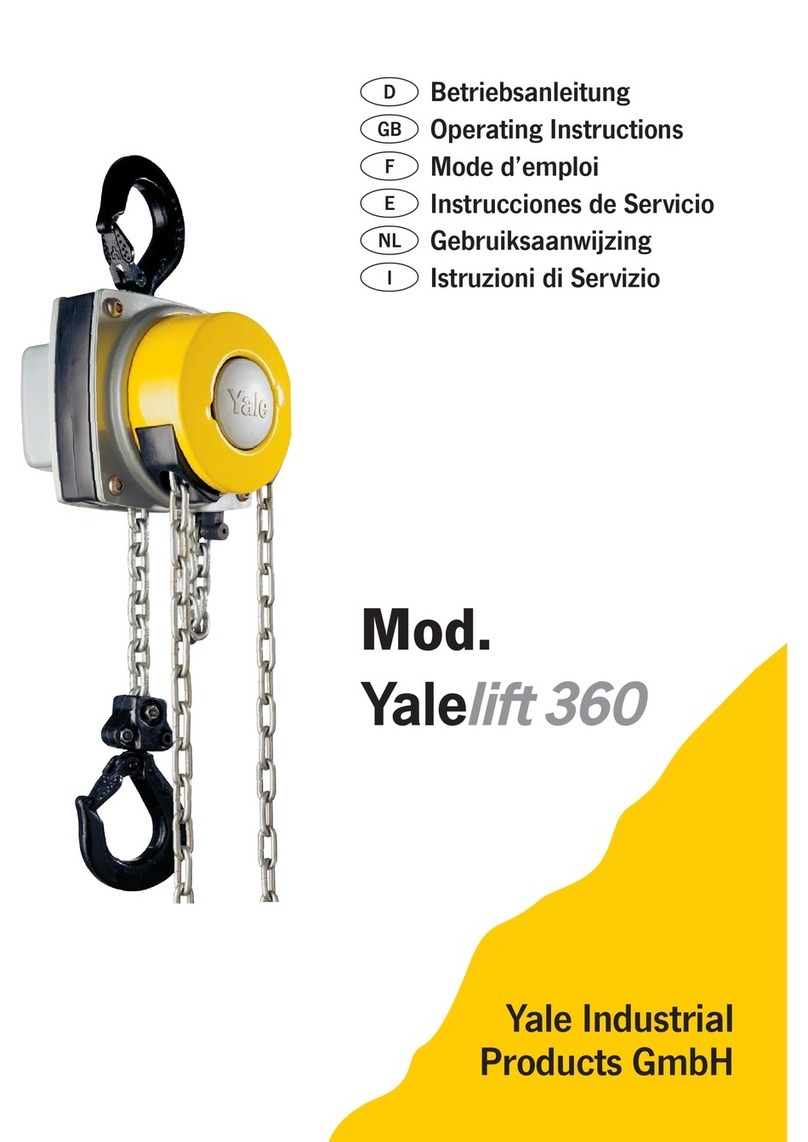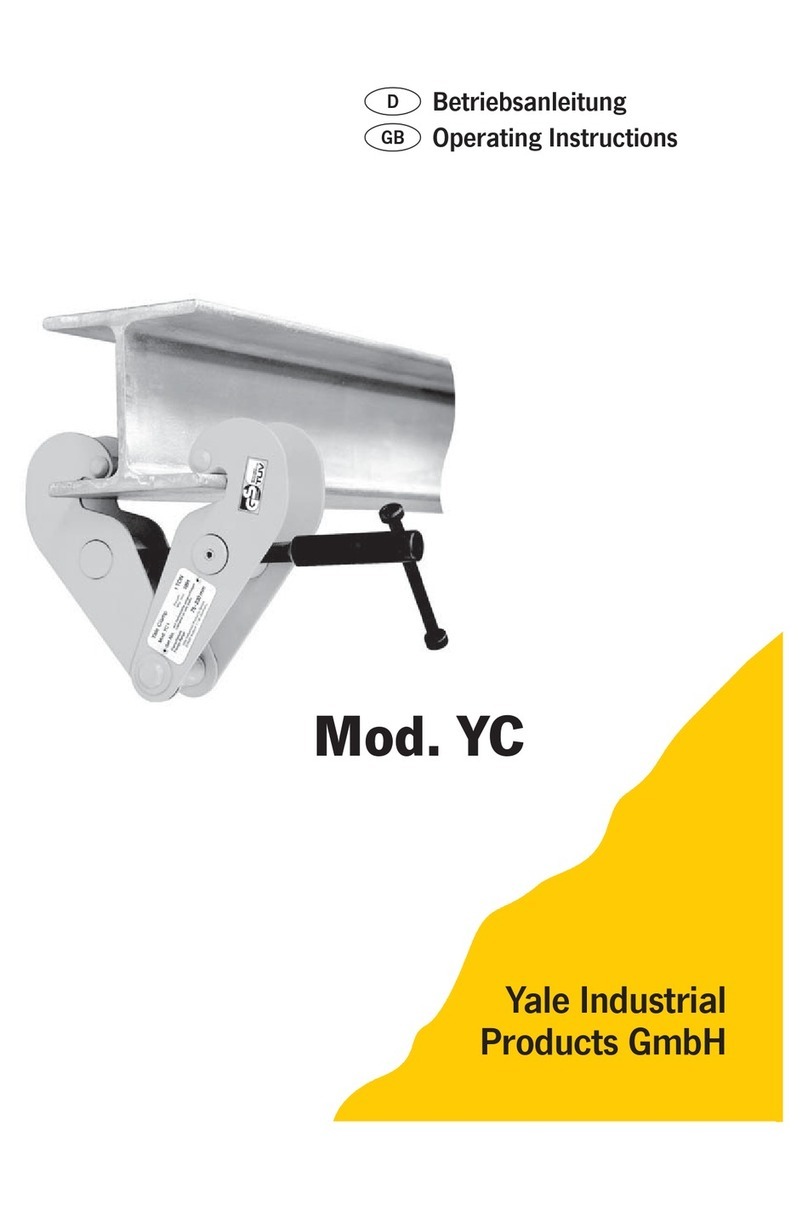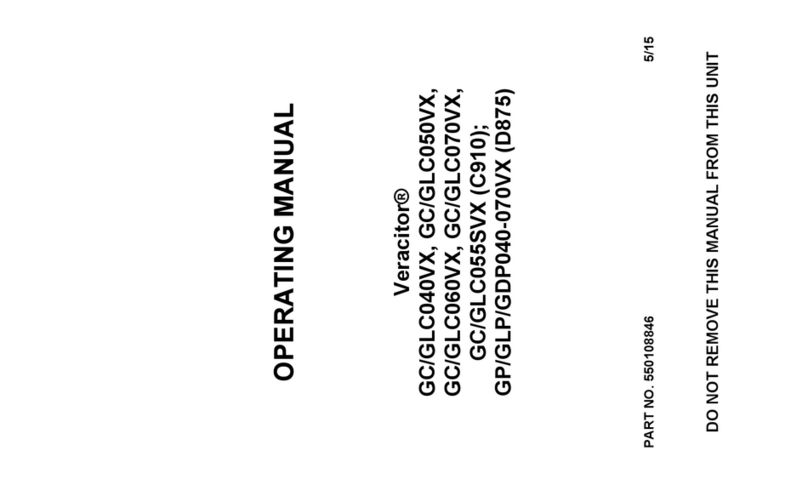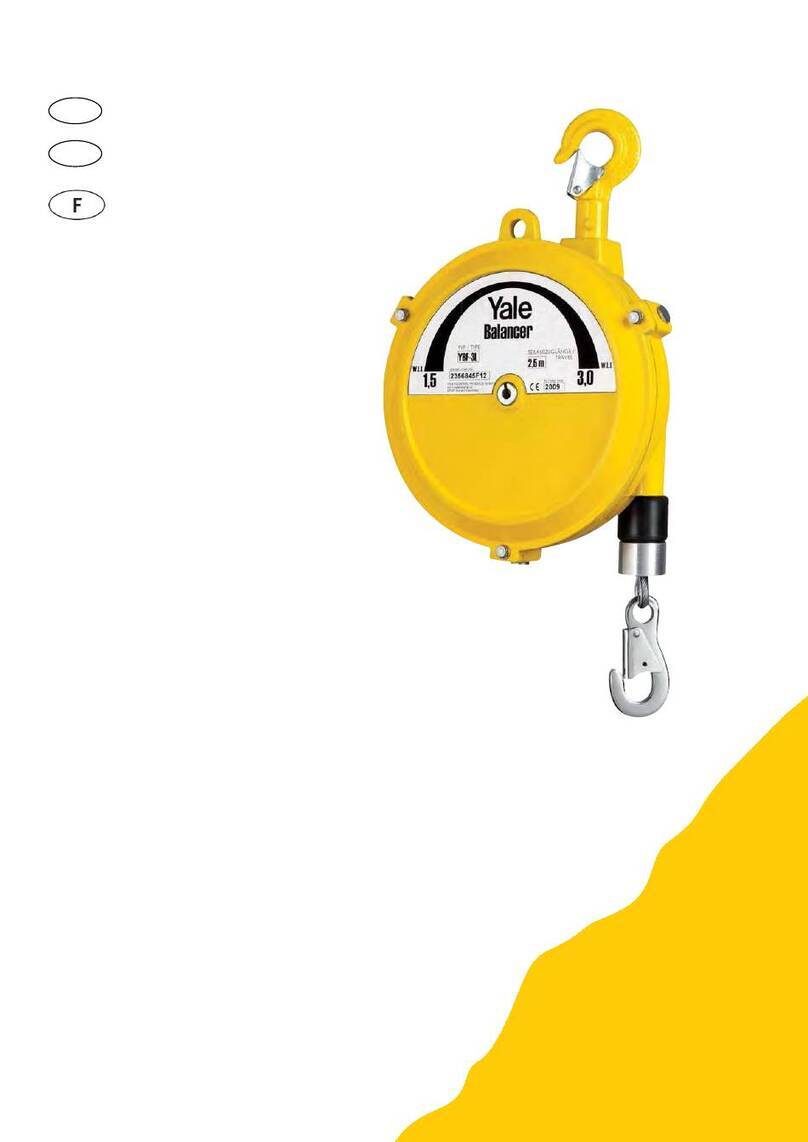
HOIST OPERATION & MAINTENANCE
6P/N: 11854801 REV. AC September 2017
Italiano Base
TER Tecno Elettrica Ravasi s.r.l.
Via Garibaldi 29/31 - 23885 Calco (LC) - Italy
Tel. +39 039 9911011 - Fax +39 039 9910445
Sede Legale - Registered Office
Via San Vigilio 2 - 23887 Olgiate Molgora (LC) - Italy
Immagine a scopo illustrativo
Numero e tipo delle camme varia
a seconda del modello
Image for illustrative purpose
the Number and type of cams is different
according to the model
07
08
IP 66 / IP 67 / IP 69K
Istruzioni d’uso e manutenzione
Il necorsa a giri Base è un dispositivo elettromeccanico per circuiti di comando/controllo e
manovra a bassa tensione (EN 60947-1, EN 60947-5-1) da utilizzarsi come equipaggiamento
elettrico di macchine (EN 60204-1) in conformità a quanto previsto dai requisiti essenziali
della Direttiva Bassa tensione 2006/95/CE e della Direttiva Macchine 2006/42/CE.
Il necorsa è previsto per impiego in ambiente industriale con condizioni climatiche anche
particolarmente gravose (temperature di impiego da –40°C a +80°C ed idoneità per utilizzo
in ambienti tropicali). L’apparecchio non è idoneo per impiego in ambienti con atmosfere
potenzialmente esplosive, in presenza di agenti corrosivi od elevata percentuale di cloruro
di sodio (nebbia salina). Il contatto con oli, acidi e solventi può danneggiare l’apparecchio;
evitare di usarli per operazioni di pulizia.
Non è consentito collegare più di una fase per ogni interruttore. Non oliare od ingrassare
gli elementi di comando o gli interruttori.
L’installazione del necorsa deve essere effettuata da personale competente ed addestrato.
I cablaggi elettrici devono essere effettuati a regola d’arte secondo le disposizioni vigenti.
Prima di eseguire l’installazione e la manutenzione del necorsa è necessario spegnere
l’alimentazione principale della macchina.
Operazioni per una corretta installazione del necorsa
1- togliere il coperchio (03) svitando le viti di ssaggio (04)
2- unire l’albero del necorsa (02) con l’albero del riduttore; evitare disassamenti tra i
due alberi;
3- ssare il necorsa in modo stabile al ne di evitare vibrazioni anomale dell’apparecchio
durante il funzionamento; per il ssaggio utilizzare esclusivamente i fori sulla cassetta
(01)
4- avvitare il pressacavo (05) nell’apposita sede.
5- introdurre il cavo multipolare nel necorsa attraverso l’apposito pressacavo (05)
6- spelare il cavo multipolare per una lunghezza adeguata alle operazione di connessione
elettrica con gli interruttori
7- nastrare la parte iniziale spelata del cavo multipolare
8- serrare il cavo nel pressacavo (05)
9- effettuare le connessioni elettriche con gli interruttori rispettando lo schema dei contatti
riportato sugli interruttori medesimi o lo schema di collegamento presente sul retro
delle istruzioni (utilizzare prese Faston da 6.3 mm).
10- effettuare la regolazione del punto di intervento delle camme; per una corretta
regolazione allentare la vite centrale (07) del gruppo camme, impostare il punto di
intervento di ogni singola camma agendo sulla relativa vite di regolazione (08) (viti
numerate ad indicare le camme in ordine crescente dal basso verso l’alto del gruppo),
quindi serrare la vite centrale (07)
11- richiudere il necorsa utilizzando le viti (04) inlando in una di esse l’estremita del
cavetto antiperdita (09), se presente. Porre attenzione al corretto posizionamento
della gomma (06) assemblata sul coperchio (03) e stringere le viti (04) con una forza
di 80/100cNm
Operazioni di manutenzione periodica
- vericare il corretto serraggio delle viti (04) del coperchio (03)
- vericare il corretto serraggio della vite centrale (07) di ssaggio delle camme
- verificare le condizioni dei cablaggi (in particolare nella zona di fissaggio
sull’interruttore)
- vericare le condizioni della gomma (06) assemblata tra il coperchio (03) e la cassetta
(01) ed il serraggio del pressacavo (05) sul cavo multipolare
- vericare l’integrità dell’involucro del necorsa (01, 03)
- vericare l’assialità tra l’albero del necorsa (02) e l’albero del riduttore
- vericare il ssaggio del necorsa
- vericare le condizioni del tappo anticondensa, se presente
Qualsiasi modica ai componenti del necorsa annulla la validità dei dati di targa ed
identicazione dell’apparecchio e fa decadere i termini di garanzia. In caso di sostituzione
di un qualsiasi componente utilizzare esclusivamente ricambi originali.
TER declina ogni responsabilità da danni derivanti dall’uso improprio dell’apparecchio o da
una sua installazione non corretta.
Caratteristiche Tecniche
Conformità alle Direttive Comunitarie 2006/95/CE 2006/42/CE
Conformità alle Norme EN 60204-1 EN 60947-1 EN60947-5-1
EN 60529
Temperatura ambiente Immagazzinaggio -40°C/+80°C
Funzionamento -40°C/+80°C
Grado di protezione IP 42
IP 65
IP 66 / IP 67 / IP 69K
Categoria di isolamento Classe II
Ingresso cavi Pressacavo M16
Velocità massima 800 giri/min
Marcature C
Caratteristiche Tecniche degli Interruttori
Categoria di impiego AC 15
Corrente nominale di impiego 3 A
Tensione nominale di impiego 250 V
Corrente nominale termica 10 A
Tensione nominale di isolamento 300 V~
Durata meccanica 1x106 manovre
Identicazione dei morsetti Secondo EN 50013
Connessioni Faston 6.3 mm
Marcature CX
Caratteristiche Tecniche UL dei Finecorsa
Finecorsa certicati PFA9042AXXXXXXX
PFA9067AXXXXXXX
Caratteristiche elettriche Interruttori B300, R300
Enclosure Finecorsa Tipo 1 PFA9042AXXXXXXX
Tipo 3 PFA9067AXXXXXXX
Conduttori Rame (CU) 60/75°C
Marcatura
PRIS090700 rev. 06
IP 42
IP 42
14
12
11
Schema di collegamento interruttori
Wiring Layout Switches
Schéma des contacts
CONDITION OF ACCEPTABILITY Underwriters Laboratories:
Use - For use only in (or with) complete equipment, when the acceptability of the combination is determined by Underwriters Laboratories Inc.
1. Cable Gland - Suitable Listed outlet bushing and ttings (QCRV/7) for models PF A90 42 xxxx xxx and suitable Listed outlet bushing and ttings (QCRV/7), “liquid Tight” for
models PF A90 67 xxxx xxx has to be installed in eld in order to maintain the enclosure respectively type1 and type 3 ratings.
2. The quick connect terminal and the wiring in general are suitable for factory wiring only.
3.Cord - Suitable Listed (ZJCZ/7) exible cord type minimum S or SJ shall be installed in eld in conjunction with the cable gland for models PF A90 42 xxxx xxx. Suitable Listed
(ZJCZ/7) exible cord type minimum SW or SJW shall be installed in eld in conjunction with the cable gland for models PF A90 67 xxxx xxx.
CONDITION D’ACCEPTANCE DE Underwriters Laboratories:
Utilisation - Utilisation uniquement dans (ou avec) un équipement complet, lorsque l’acceptabilité de l’association est déterminée par Underwriters Laboratories Inc.
1. Presse-étoupe - Convient douille de sortie de Listed et accessoires (QCRV / 7) pour les modèles PF A90 42 xxxx xxx et la douille de sortie Listed approprié et raccords (QCRV / 7),
« étanche aux liquides » pour les modèles PF A90 67 xxxx xxx doit être installé dans domaine an de maintenir l’enceinte respectivement type1 et 3 votes Type.
2. Le terminal de connexion rapide et le câblage en général sont appropriés pour le câblage en usine seulement.
3.Cord - Listed approprié (ZJCZ / 7) minimum type de cordon souple S ou SJ doit être installé dans un champ en conjonction avec le presse-étoupe pour les modèles PF A90 42
xxxx xxx. Cord - Listed approprié (ZJCZ / 7 minimum type de cordon souple SW ou SJW doit être installé dans un champ en conjonction avec le presse-étoupe pour les modèles PF
A90 67 xxxx xxx.
IP 65
1
5
2
4
4
3
1
5
3
9
2
4
4
6
1
5
4
4
3
2
6
IP 65
Rating codes for d-c control-circuit contacts
Valeurs pour les interrupteurs circuit de commande d-c
Contact rating code
designation
Caractéristique électriques
des interrupteurs
Thermal continuous
test current, amperes
Courant nominal
thermique, amperes
Maximum make or break current, amperes
Courant maximum disjonction ou interruption, amperes
125 Volt 250 Volt 301 ÷ 600 Volt
R300 1.0 0.22 0.11 -
R150 1.0 0.22 - -
Rating codes for a-c control-circuit contacts at 50 and 60 hertz
Valeurs pour les interrupteurs circuit de commande a-c à 50 et 60 hertz
Contact rating
code designation
Caractéristique
électriques des
interrupteurs
Thermal
continuous test
current amperes
Courant nominal
thermique,
amperes
Maximum current, amperes / Courant maximum, amperes
120 Volt 240 Volt 480 Volt 600 Volt
Make
Disjonction
Break
Interruption
Make
Disjonction
Break
Interruption
Make
Disjonction
Break
Interruption
Make
Disjonction
Break
Interruption
B300 5 30 3.00 15 1.50 - - - -
B150 5 30 3.00 - - - - - -
RATING ELETTRICI UL DEGLI INTERRUTTORI / UL ELECTRICAL RATING OF THE SWITCHES
GEARED LIMIT SWITCH USE AND
MAINTENANCE INSTRUCTIONS
Base rotary limit switch is an electromechanical device for low voltage control
circuits (EN 60947-1, EN 60947-5-1) to be used as electrical equipment on
machines (EN 60204-1) in compliance with the fundamental requirements of the
Low Voltage Directive 2006/95/CE and of the Machine Directive 2006/42/CE.
The limit switch is designed for use in industrialal environments under even severe
climatic conditions (operational temperature from –40°C to +80°C, suitable for use
in tropical environment). The equipment is not suitable for use in environments
with potentially explosive atmosphere, corrosive agents or a high percentage of
sodium chloride (saline fog). Oils, acids or solvents may damage the equipment;
avoid using them for cleaning. Do not connect more than one phase to each
switch. Do not oil or grease the control elements or the switches.
The installation of the limit switch shall be carried out by expert and trained
personnel. Wiring shall be properly done according to the current instructions.
Prior to the installation and the maintenance of the limit switch, the main
power of the machinery shall be turned off.
Steps for the proper installation of the limit switch
1. loosen the xing screw (04) and remove the cover (03)
2. connect the limit switch shaft (02) to the reduction gear shaft avoiding
any misalignment between the two shafts
3. x the limit switch rmly in place to prevent abnormal vibrations of the
equipment during operation; use only the xing holes on the base (01) to
x the equipment
4. tighten the cable clamp (05) into appropriate place.
5. insert the cable into the limit switch through the cable clamp (05)
6. strip the cable to a length suitable for wiring the switches
7. tape the stripped part of the cable
8. clamp the wire into the cable clamp (05)
9. connect the switches according to the contact scheme printed on the
switches or to the wiring scheme on the back of the instructions (use 6.3
mm Faston taps)
10. adjust the operating point of the cams; for proper adjustment, loosen the
central screw (07) of the cam set, adjust the operating point of each single
cam by turning its screw (08) (the numbers on the screws refer to the cams
counting from bottom to top), then tighten the central screw (07)
11. insert the free end of the no-drop wire (09) into one of the screws (04),
then close the limit switch using the screws (04); check the proper
positioning of the rubber (06) in the cover (03) and tighten the screws
(04) with a torque of 80/100 cNm
Periodic maintenance steps
- check the proper tightening of the screws (04) and cover (03)
- check the proper tightening of the central screw (07) holding the cams
- check the wiring conditions (in particular where wires clamp into the switch)
- check the conditions of the rubber (06) t between the cover (03) and the
base (01) and check the tightening of the cable clamp (05) around the cable
- check that the limit switch enclosure (01, 03) is not broken
- check the alignment between the limit switch shaft (02) and the reduction
gear shaft
- check that the limit switch is properly xed
- if there is an anti-moisture plug, check its conditions
In case any component of the limit switch is modied, the validity of the
markings and the guarantee on the equipment are annulled. Should any
component need replacement, use original spare parts only.
TER declines all responsibility for damages caused by the improper use or
installation of the equipment.
TECHNICAL SPECIFICATIONS
Conformity to
Community Directives 2006/95/CE 2006/42/CE
Conformity to Standards EN 60204-1 EN 60947-1 EN60947-5-1
EN 60529
Ambient temperature Storage -40°C/+80°C
Operational -40°C/+80°C
Protection degree IP 42
IP 65
IP 66 / IP 67 / IP 69K
Insulation category Class II
Cable entry Cable clamp M16
Maximum speed 800 rev/min
Markings C
TECHNICAL SPECIFICATIONS OF THE
SWITCHES
Utilisation category AC 15
Rated operational current 3 A
Rated operational voltage 250 V
Rated thermal current 10 A
Rated insulation voltage 300 V~
Mechanical life 1x106operations
Terminal referencing According to EN 50013
Connections 6.3 mm Faston taps
Markings C X
TECHNICAL SPECIFICATIONS UL
OF THE ROTARY LIMIT SWITCHES
Certied rotary limit switches PFA9042AXXXXXXX
PFA9067AXXXXXXX
Switches Electrical Ratings B300, R300
Rotary limit switch Enclosure Type 1 PFA9042AXXXXXXX
Type 3 PFA9067AXXXXXXX
Conductors Copper (CU) 60/75°C
Be certain that electrical power supply is OFF and locked in
the open position before removing limit switch cover
Check limit switch operation carefully, without load, before
placing hoist in service. If misadjusted, SEVERE DAMAGE AND/
OR A DROPPED LOAD COULD RESULT. Allow 3" for hook drift
in both directions. Never allow less than three (3) complete
wraps of rope on drum with hook in lowest position.
WHEN ADJUSTING LIMIT SWITCHES
HAZARDOUS VOLTAGE. CAN CAUSE DEATH, SERIOUS
PERSONAL INJURY, OR PROPERTY DAMAGE.
DISCONNECT POWER BEFORE WORKING ON THIS EQUIPMENT.
EACH STEP OUTLINED BELOW MUST BE FOLLOWED FOR
PROTECTION AGAINST ELECTRICAL SHOCK AND INJURY
FROM MOVING COMPONENTS.
AT LEAST THREE WRAPS OF ROPE MUST REMAIN ON THE
DRUM IN THE LOWEST POSITION.
MAKE SURE GEARED LIMIT SWITCH TRIPS FIRST,
ALLOWING THE ROD OR WEIGHT TYPE SWITCH TO
ACT AS THE BACKUP LIMIT.
